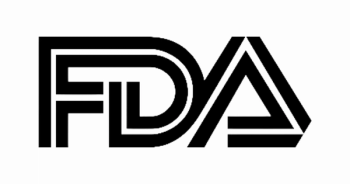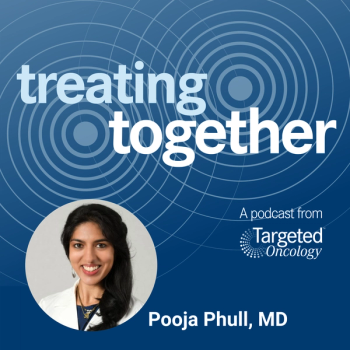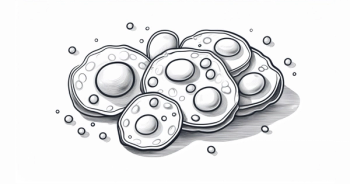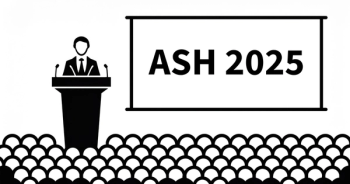
Peers & Perspectives in Oncology
- February 2025
- Pages: 64
Key Trials From ASH 2024 Impact Treatment for Plasma Cell Disorders Going Forward
Peers & Perspectives in Oncology editorial board member Marc J. Braunstein, MD, PhD, FACP, discussed the significant advancements in multiple myeloma treatment at the 2024 ASH Annual Meeting and Exposition.
Peers & Perspectives in Oncology editorial board member Marc J. Braunstein, MD, PhD, FACP, discussed the significant advancements in multiple myeloma treatment at the 2024 American Society of Hematology (ASH) Annual Meeting and Exposition, highlighting the efficacy of daratumumab (Darzalex) in combination therapies, chimeric antigen receptor (CAR) T-cell therapy’s high minimal residual disease (MRD)–negativity rates and extended remissions, and what these advancements mean for treatment in 2025.
Peers & Perspectives in Oncology: What is the significance of using daratumumab in multiple myeloma and similar diseases?
BRAUNSTEIN: We are currently witnessing tremendous improvements in outcomes for patients with multiple myeloma at various lines of therapy, but especially in the first line of treatment, where we have our best chances to prolong progression-free survival [PFS]. That success is largely due to the inclusion of monoclonal antibodies, particularly those that target CD38 including daratumumab and isatuximab-irfc [Sarclisa] for treatment of both transplant-eligible and transplant-ineligible patients with newly diagnosed myeloma.
In fact, we now have a wealth of highly powered, very robust phase 3 randomized clinical trials, for both transplant eligible and ineligible myeloma at diagnosis, where the investigators have compared 3 drugs without a monoclonal antibody to 4 drugs with an antibody. Using a monoclonal antibody has shown to have better response rates, longer PFS, and improved rates of MRD negativity, with anticipated adverse event [AE] profiles that were not necessarily hampering success of these regimens. It’s well established at this point that including anti-CD38 antibodies as part of upfront treatment leads to better outcomes, especially in combination with other agents such as proteasome inhibitors and immunomodulators. We’re raising the bar in terms of response rates and depth of remission.
What did the data at ASH 2024 show for patients with multiple myeloma who were given daratumumab?
The CEPHEUS trial [NCT03652064] looked specifically at patients with symptomatic multiple myeloma who were not intended to go for upfront autologous stem cell transplant [SCT].1 This study is reminiscent of the phase 3 PERSEUS trial [NCT03710603] that was previously presented at 2023 ASH and since published in The New England Journal of Medicine in 2024.2 In the PERSEUS study, they looked at daratumumab, lenalidomide [Revlimid], bortezomib [Velcade], and dexamethasone vs lenalidomide, bortezomib, and dexamethasone alone. That study enrolled transplant-eligible patients and showed improved PFS with the quadruplet regimen and daratumumab/lenalidomide maintenance post transplant.
The CEPHEUS study enrolled patients who were either ineligible for SCT because of various factors, such as performance status, comorbidities, and age, or patients who were not necessarily ineligible but who were willing to defer upfront transplant. This study, which was presented initially at the International Myeloma Society Annual Meeting in Greece in late 2024, was updated at ASH 2024 in terms of the final overall response rates [ORR] and MRD negativity rate; the latter being the primary end point.1
The CEPHEUS data presented at ASH 2024 showed that there was a significant improvement in complete response [CR] or better in 81% of the patients receiving the quadruplet regimen vs 62% in the 3-drug control arm. The PFS rate was about 81% vs 70% at 54 months, and the rates of MRD negativity were 61% vs 39%, all favoring the quadruplet arm.
In this population, which arguably may not be as fit as your transplant-eligible patients, there were no unexpected safety signals. There were higher rates of infection and higher rates of myelosuppression in the daratumumab-containing arm. It’s worth noting the study was done in large part during the peak of the COVID-19 pandemic, so there were slightly higher rates of grade 3/4 COVID-19.
Overall, the study clearly shows that one can significantly improve depth of remission and duration of remission with the quadruplet regimen. I think that since this population of transplant-ineligible or transplant-deferred patients is perhaps a bit more fragile than your transplant-eligible patients, one must tailor which patients fit into the population studied in CEPHEUS and are fit enough for a quadruplet therapy, but clearly this approach improves outcomes when compared with triplet therapy alone without the monoclonal antibody.
Do you think there were any other outstanding results from the other daratumumab-based trials that were presented?
The AQUILA study [NCT03301220], which was presented by Meletios A. Dimopoulos, MD, at ASH this past December, was a phase 3 randomized study that looked at daratumumab monotherapy vs active monitoring in patients with smoldering myeloma.3,4 The pretext for this study is that the definition of high-risk smoldering myeloma has evolved and we no longer look at patients with smoldering myeloma as one group but as patients who have a progression that’s more similar to MGUS [monoclonal gammopathy of undetermined significance] over time and those who are higher risk, who have a much higher risk of progression.
Historically, we’ve thought of smoldering myeloma as having about a 10% risk of progression to myeloma compared with 1% with MGUS. However, we’ve identified patients with smoldering myeloma who have close to 50% progression at 2 years, and those are the patients with high-risk smoldering myeloma.5
What was interesting about the AQUILA study is that, as compared with several historical, randomized studies that have looked at patients with smoldering myeloma—such as the QUIREDEX study [NCT00480363], which was published in The Lancet in 2016 and compared lenalidomide/dexamethasone [with] observation6 and didn’t necessarily include patients who would be currently defined as high risk; it was a bit broader—the AQUILA study, to the credit of the investigators, included a more modern definition of high-risk patients who met those criteria but included patients with lower-risk smoldering myeloma as well.
Nevertheless, there is no standard of care [SOC] for how we manage patients with high-risk smoldering myeloma. The previous 2 randomized studies looked at lenalidomide/ dexamethasone, as we mentioned, the QUIREDEX, or an ECOG-ACRIN study [NCT01169337] that was published in the Journal of Clinical Oncology in 2022 that looked at lenalidomide vs observation.7 Both of those studies did show a delay in progression to multiple myeloma, and now we have a randomized trial using daratumumab.6,7
What were the design and efficacy of the AQUILA trial?
In this study, investigators looked at daratumumab vs observation in patients with smoldering myeloma. They were enrolled between December 2017 and May 2019 at 163 sites in 23 countries. They had to have a substantial number of sites to identify this population since smoldering myeloma is less common than MGUS or multiple myeloma. There were 194 patients in the daratumumab group and 196 in the active monitoring group. The median time from diagnosis to enrollment was less than 1 year, so patients were pretty much enrolled close to when they were identified with smoldering myeloma and didn’t have much time to linger before enrolling in the study. The primary end point of the study was PFS to multiple myeloma.3,4
The study was a positive [one], and they showed that, as compared with active monitoring, daratumumab was able to delay progression to multiple myeloma. At a median follow-up of 65 months, 63% of patients had not progressed vs 41% of patients who had not progressed in the observation, so it did show a significant improvement in delaying progression. In subgroup analyses, the effect was most pronounced in high-risk patients.
In the trial design, the patients in the daratumumab arm got treatment until 36 months or less if they progressed before that. This is not indefinite therapy. Patients received daratumumab in the daratumumab arm for up to 3 years, and then they stopped. Even after they stopped, there still were delays in time to progression, and across all prespecified subgroups, the data favored daratumumab. In addition, there was a small but significant improvement in overall survival [OS] as well; at 60 months, it was 93% vs 87% in the control arm.
They also presented AEs, and they were consistent with the class of daratumumab. There were more rates of myelosuppression, but overall, the safety profile was predictable. This was published concurrently in The New England Journal of Medicine. Johnson & Johnson submitted to the FDA for review of daratumumab for approval in smoldering myeloma.
What do you think of these outcomes for the smoldering myeloma population?
My take on the data from this and other studies is that adding a monoclonal antibody to any regimen, even when used as a single agent in smoldering myeloma, will improve outcomes. The question is, what is the ideal regimen to treat high-risk multiple myeloma and smoldering myeloma? There are ongoing studies of other regimens such as daratumumab with lenalidomide and dexamethasone to see whether we can further to delay progression in smoldering myeloma. But I think debate still remains in the field about which regimen is ideal to delay progression of patients with smoldering myeloma. I think AQUILA adds to the wealth of data that have shown that you can delay time to progression to multiple myeloma, and in the AQUILA study, specifically in a subgroup of how we currently define high-risk smoldering myeloma.
What trials presented affected patients in the amyloid space?
The ANDROMEDA study [NCT03201965] was looking specifically at patients with light chain amyloidosis and was previously published in The New England Journal of Medicine, where they compared daratumumab, cyclophosphamide, bortezomib, and dexamethasone to cyclophosphamide/bortezomib/dexamethasone alone, or Dara-VCd vs VCd.8 The primary end point of that study was hematologic CR. Essentially, the markers of the disease, the free light chains, improved more in the Dara-VCd arm. That, to me, is a little bit of a lower-hanging fruit than to ask, does the regimen improve survival? Because the drugs in this study are very effective at targeting plasma cells, and you can lower those light chain levels that correlate with the plasma cell burden. But the update at ASH was: Does this prolong survival by essentially improving organ function that can be affected by light chain amyloidosis?
The study enrolled patients with at least 1 organ involved with light chain amyloidosis, and they were treatment naive. It excluded patients with very advanced heart failure, but patients with less advanced heart failure were allowed to enroll in the study. Essentially, patients were treated with 6 cycles of either Dara-VCd or VCd alone. And then the Dara-VCd–arm patients received daratumumab maintenance for a maximum of 24 cycles, whereas the control arm went on observation. Initially, this was a positive study that showed an improvement in hematologic CR.
The updated final analysis at ASH 2024 showed a 60% vs 19% hematologic CR favoring the daratumumab-containing arm. Also, the major organ deterioration PFS HR was 0.44 [95% CI, 0.31-0.63; P < .0001], a significant improvement with the daratumumab-containing regimen. Finally, the OS update showed that at 60 months, there was a 76% vs 65% OS rate favoring Dara-VCd.9
This regimen essentially builds on the backbone of VCd by adding daratumumab and establishes this quadruplet regimen as the SOC for newly diagnosed patients with light chain amyloidosis. While there’s still room for improvement, especially in patients with severe organ dysfunction such as advanced cardiac amyloidosis, I think this regimen certainly gives us encouragement that we’re starting to bring in modern antimyeloma drugs into the light chain amyloid space and improving survival in a disease that is often challenging make improvements in when patients present with organ involvement from light chain amyloid that is often difficult to reverse. I think this regimen essentially is the SOC for newly diagnosed amyloid, and the data presented shows an improvement in OS, which is gratifying.
Could you discuss the findings in relapsed/refractory multiple myeloma with the update for ciltacabtagene autoleucel (Carvykti; cilta-cel)?
Cilta-cel was approved based on early-phase data in a heavily pretreated, late-relapse setting in patients with a median of 5 prior lines of treatment. In those studies, CARTITUDE-1 [NCT03548207] and CARTITUDE-2 [NCT04133636], the ORRs were very impressive, greater than 90%. CARTITUDE-4 [NCT04181827] was a randomized phase 3 study that looked at cilta-cel vs SOC regimens in patients who were lenalidomide refractory after 1 to 3 prior lines of therapy. This study was published in The New England Journal of Medicine in 2023, where they demonstrated that when compared with SOC regimens, cilta-cel significantly prolonged the PFS and had higher ORRs.10
The data presented at ASH 2024 by Rakesh Popat, [PhD, MBBS, MRCP, FRCPath,] looked at the rates of MRD negativity and, not surprisingly, showed that among the 419 patients who were randomly assigned in this study, the rates of MRD negativity set at a level of 10-5 were significantly better with cilta-cel vs SOC at a rate of 62% vs 18% in the intention-to-treat group.11 This was consistent across subgroups, and in about half of the patients, achievement of MRD negativity happened within the first 2 months. These data continue to show that CAR T-cell therapy—in this case, targeting B-cell maturation antigen—clearly is effective in myeloma. It improves depth of remission, duration of remission, and ORR and is now approved as of 2024 for patients in early relapses after 1 to 3 prior lines of therapy after being refractory to lenalidomide.
I think that the takeaway from this study and its update with MRD negativity data clearly show that CAR T-cell therapy offers a benefit in all lines of therapy in the relapse setting. The concern that exists is about the potential for AEs such as cytokine release syndrome [CRS] or neurological toxicity. Although there is a risk of delayed neurotoxicity with cilta-cel up to about a month from infusion as well as a small risk of parkinsonism and motor disorders with cilta-cel, the way I read the data is that the incidence of those severe AEs is relatively low, and I think the benefits outweigh the risks, particularly in patients who are high risk or have functionally high risk where they’ve relapsed within 18 to 24 months of their initial treatment.
What changes do you foresee now that CAR T-cell therapy is moving into these earlier lines of therapy for myeloma?
There are a few things that have to be addressed in order to facilitate the therapy being accessible to patients. One is we need a more robust infrastructure to allow for CAR T apheresis and delivery. There are some regions of the country or the world that have limited access to CAR T-cell therapy, in part because it is not off the shelf or too costly. So for patients, the majority of which with multiple myeloma who are treated in community settings, I think you have to have a good referral system to facilitate CAR T-cell therapy.
The other thing is that we’re becoming better at managing patients on CAR T-cell therapy, and that includes identifying and managing the immediate toxicities like CRS or neurological toxicity but also managing the long-term AEs, primarily infections. Overcoming these barriers will allow patients to thrive more following CAR T-cell therapy when it’s used in the earlier lines. I think that the SOC for patients somewhere between 1 to 3 prior lines of therapy is to use CAR T-cell therapy. Whether you use it in the first or second relapse is debatable, but I think this therapy should be used within early relapses, and then you can save your other therapies, such as your triplet combinations and your bispecific antibodies, for later relapses.
This all continues to evolve. There are studies looking at CAR [T-cell therapy], like CARTITUDE-6 [NCT05257083] looking at cilta-cel in the first line compared with transplant. There’s some of the teclistamab-cqyv [Tecvayli] and talquetamab-tgvs [Talvey] studies looking at these bispecific antibodies in the first line. The field continues to evolve, but I think T-cell–engaging therapy will continue to evolve to become one of the SOCs in the first line or in the early-relapse settings.
How do you feel that the data you’ve discussed today and presented at ASH overall will impact treatment over the course of 2025?
Looking at 2025, I think it becomes clear that we should continue to encourage our patients to enroll in clinical trials when possible. There are more available therapies than we have the ability to create studies for to compare these different regimens. Fortunately, many of them, such as CAR T-cell therapy, bispecific therapy, and novel agents that are being developed like CELMoDs [cereblon E3 ligase modulators], are showing such robust efficacy in later lines of therapy that we should try to enroll patients when we’re looking at those therapies in earlier lines because they’re very likely to be even more effective, notwithstanding that we still have to be cautious about safety with neurotoxicity, CRS, infections, and things of that nature. But I think that we’re going to see an increase in patients who are getting CAR T-cell therapy in 2025 compared with previous years, especially in the earlier lines thanks to some of the data that we reviewed from ASH. We may see new approvals of combination regimens with some of the bispecific antibodies.
Where I think there’s still room for improvement or modification is after CAR T-cell therapy. The current standard is just observation because of the immune surveillance that happens after CAR T-cell infusion, and the cells continue to persist. But we know that relapses are more likely once the CAR T cells diminish in circulation, so the ability to give maintenance therapy in that setting may prolong the remission. I think enrolling patients in those kinds of clinical trials is important as we continue to try to make improvements in survival for patients using these novel therapies.
REFERENCES
1. Zweegman S, Facon T, Hungria V, et al. Phase 3 randomized study of daratumumab (DARA) + bortezomib, lenalidomide and dexamethasone (VRd) versus alone in patients with transplant-ineligible newly diagnosed multiple myeloma or for whom transplant is not planned as initial therapy: analysis of minimal residual disease in the Cepheus trial. Blood. 2024;144(suppl 1):362. doi:10.1182/blood-2024-200871
2. Sonneveld P, Dimopoulos MA, Boccadoro M, et al; PERSEUS Trial Investigators. Daratumumab, bortezomib, lenalidomide, and dexamethasone for multiple myeloma. N Engl J Med. 2024;390(4):301-313. doi:10.1056/NEJMoa2312054
3. Dimopoulos MA, Voorhees PM, Schjesvold F, et al. Phase 3 randomized study of daratumumab monotherapy versus active monitoring in patients with high-risk smoldering multiple myeloma: primary results of the Aquila study. Blood. 2024;144(suppl 1):773. doi:10.1182/blood-2024-201057
4. Dimopoulos MA, Voorhees PM, Schjesvold F, et al; AQUILA Investigators. Daratumumab or active monitoring for high-risk smoldering multiple myeloma. N Engl J Med. Published online December 9, 2024. doi:10.1056/NEJMoa2409029
5. Rajkumar SV, Landgren O, Mateos MV. Smoldering multiple myeloma. Blood. 2015;125(20):3069-3075. doi:10.1182/blood-2014-09-568899
6. Mateos MV, Hernández MT, Giraldo P, et al. Lenalidomide plus dexamethasone versus observation in patients with high-risk smouldering multiple myeloma (QuiRedex): long-term follow-up of a randomised, controlled, phase 3 trial. Lancet Oncol. 2016;17(8):1127-1136. doi:10.1016/S1470-2045(16)30124-3
7. Lonial S, Jacobus S, Fonseca R, et al. Randomized trial of lenalidomide versus observation in smoldering multiple myeloma. J Clin Oncol. 2020;38(11):1126-1137. doi:10.1200/JCO.19.01740
8. Kastritis E, Palladini G, Minnema MC, et al; ANDROMEDA Trial Investigators. Daratumumab-based treatment for immunoglobulin light-chain amyloidosis. N Engl J Med. 2021;385(1):46-58. doi:10.1056/NEJMoa2028631
9. Kastritis E, Palladini GO, Minnema MC, et al. Subcutaneous daratumumab (DARA) + bortezomib, cyclophosphamide, and dexamethasone (VCd) in patients with newly diagnosed light chain (AL) amyloidosis: overall survival and final major organ deterioration progression-free survival results from the phase 3 Andromeda study. Blood. 2024;144(suppl 1):891. doi:10.1182/blood-2024-205077
10. San-Miguel J, Dhakal B, Yong K, et al. Cilta-cel or standard care in lenalidomide-refractory multiple myeloma. N Engl J Med. 2023;389(4):335-347. doi:10.1056/NEJMoa2303379
11. Popat R, Oriol A, Cavo M, et al. Ciltacabtagene autoleucel (cilta-cel) vs standard of care (SoC) in patients with lenalidomide (Len)-refractory multiple myeloma (MM) after 1-3 lines of therapy: minimal residual disease (MRD) negativity in the phase 3 CARTITUDE-4 trial. Blood. 2024;144(suppl 1):1032. doi:10.1182/blood-2024-201533
Articles in this issue
10 months ago
Roundtable Roundup: Bladder Cancer







































